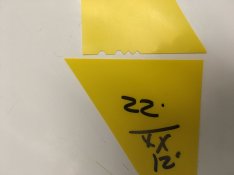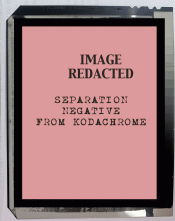Thank for clarifying your meaning, laser. The bigger problem was not formal discontinuance, but Kodak just being flaky and unpredictable about the subject, with users being unable to trust them after a certain point. They also kept changing the yellow dye. The Kodak dye set was a compromise between dye permanence, ease of use, and retouchability, with the yellow dye being the fussiest in this respect. Prior to PS, dye transfer was prized for complex advertising imagery requiring manipulation, whereas some art users were more concerned about lightfastness, so a back-and-forth tug-of-war was going on. Then there were apparently some second-generation factory technicians who delivered substandard this or that, which can be utter hell in a such a complex workflow which a single off step can require recalibration of a lot of things. I was never involved in the fray because I went to Cibachrome like a duck to water as soon as it came out, and am now interested in DT just as fun diversion if I ever can pull myself away from B&W and dramatically improved chromogenic printing for a sufficient block of time. But quite a few people have told me their own stories of just how badly and unpredictably they were burned by Kodak. I had other friends who owned big successful labs and were literally bankrupted by Kodak flaking out on expensive service contracts on their early digital equipment, yet still demanded installment payments! Kodak was such a big company that one department never seemed to know what another was doing, and that was a bad thing for a process like DT which needed a range of supplies. I saw and heard all of that first hand. Kodak did in fact burn a lot of bridges behind them. Unfortunately, with Ron M. now gone, a bit more of the inside story is unavailable; he was somewhat involved in the DT forum too. But some of the old time lab operators were bitter competitors and remain extremely suspicious of one another, to state it mildly. But Jim Browning put a lot of effort up front to revive the process, and a wide range of secrets is now out of the bag, plus working formulas necessary for manufacture. Relevant dyes have aways been readily available, but not in quite as convenient a fashion as Kodak delivered. ... But really, in my opinion it was Cibachrome which really weakened the demand for DT, even if inkjet gave it the final death blow commercially. I do think there is still enough worldwide demand for matrix film and a pre-mordanted paper to justify a modest niche revival. If Bettina and her husband can justify that up-front expense for their own single lab, and have gained commercial viability, it proves a point.








